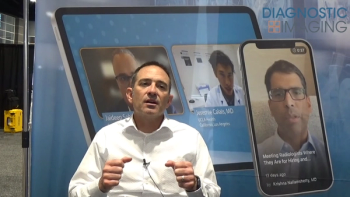
Fetal curvature projected in 3-D
While three-dimensional ultrasound is not yet as fast as two-dimensionalimaging, reconstructed 3-D images may provide diagnostic informationthat standard scanning techniques cannot provide, according toRalph Ranalli, product manager for Philips
While three-dimensional ultrasound is not yet as fast as two-dimensionalimaging, reconstructed 3-D images may provide diagnostic informationthat standard scanning techniques cannot provide, according toRalph Ranalli, product manager for Philips Ultrasound.
Philips' strategy in its 3-D development program is to applythe technology to problems posed by 2-D techniques, Ranalli said.
"Because it (3-D ultrasound) is still a research project,we are looking at everything ultrasound does at this point,"he said.
Initial work by the vendor showed how 3-D volumetric reconstructioncan create image planes not possible in standard scanning dueto transducer access problems (SCAN 4/10/91).
Philips has also developed an image projection technique using3-D volumetric reconstruction that produces high-resolution 2-Dimages of anatomical structures not easily scanned with standardtransducers. Three-D image projection can portray objects, suchas a curved fetal hand, with a clarity not seen before in 2-Dimages, he said.
The technique involves searching through a 3-D volume and isolatingthe bright spots that represent bone or other objects. This datais then processed and presented in an image showing the full bonecurvature, Ranalli said.
Three-D image projection allows fetal sonographers to betterfocus on specific areas, such as the face and hands. Reconstructedimages may aid sonographers in obtaining fetal bone measurements,which are critical to high-risk ob/gyn assessment.
Philips showed projection images at its booth at the AmericanInstitute of Ultrasound in Medicine meeting in San Diego lastmonth. The technique was also discussed by Dr. Dolores H. Pretoriusduring an AIUM categorical course on ob/gyn ultrasound. Pretoriusis chief of ultrasound at the University of California, San Diego,and a leading researcher in fetal assessment.
Newsletter
Stay at the forefront of radiology with the Diagnostic Imaging newsletter, delivering the latest news, clinical insights, and imaging advancements for today’s radiologists.




























